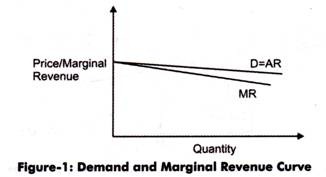In monopolistic competition, the demand curve is relatively elastic, due to availability of close substitutes in monopolistic competition have limited power to decide and regulate the prices of their products.
This is because if sellers increase the prices of products, customers may switch to nearest competitors to avail the close substitutes.
Due to large number of sellers with close substitute products, the level of competition is very high in the market. As a result, the demand curve shows a negative slope and relative elasticity. In other words, demand curve is not perfectly elastic in monopolistic competition, but it is relatively elastic.
This is because the output generated by an organization is different from the output generated by other organization, as the prices of their products are different. Each seller under a monopolistic competitive market can sell a wide range of output within a relatively narrow range of prices.
ADVERTISEMENTS:
In monopolistic competition, demand curve is the Average Revenue (AR) curve. In perfect competition, Marginal Revenue (MR), price and AR are equal and constant. On the other hand, in imperfect competition (monopolistic competition, monopoly and oligopoly), MR is less than price and AR.
Therefore, in imperfect competition, MR, price of product, and AR decreases with the increase in the quantity of product. This decrease depicts the control of sellers in the market. In monopolistic competition, MR curve is negatively sloped. This implies that the price of a product depends on the quantity of products sold.
Figure-1 shows the demand and marginal revenue curves under monopolistic competition:
In Figure-1, D=AR represents the demand curve while MR represents marginal revenue curve. Therefore, from Figure-1, it can be interpreted that the demand curve is relatively elastic and MR is less than AR.
